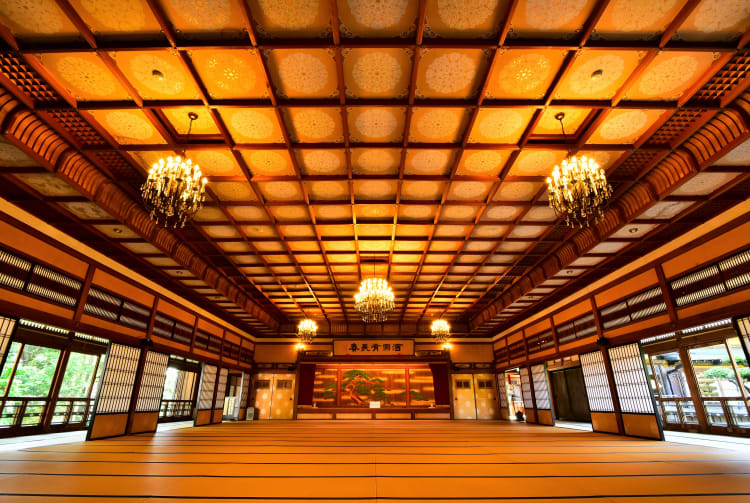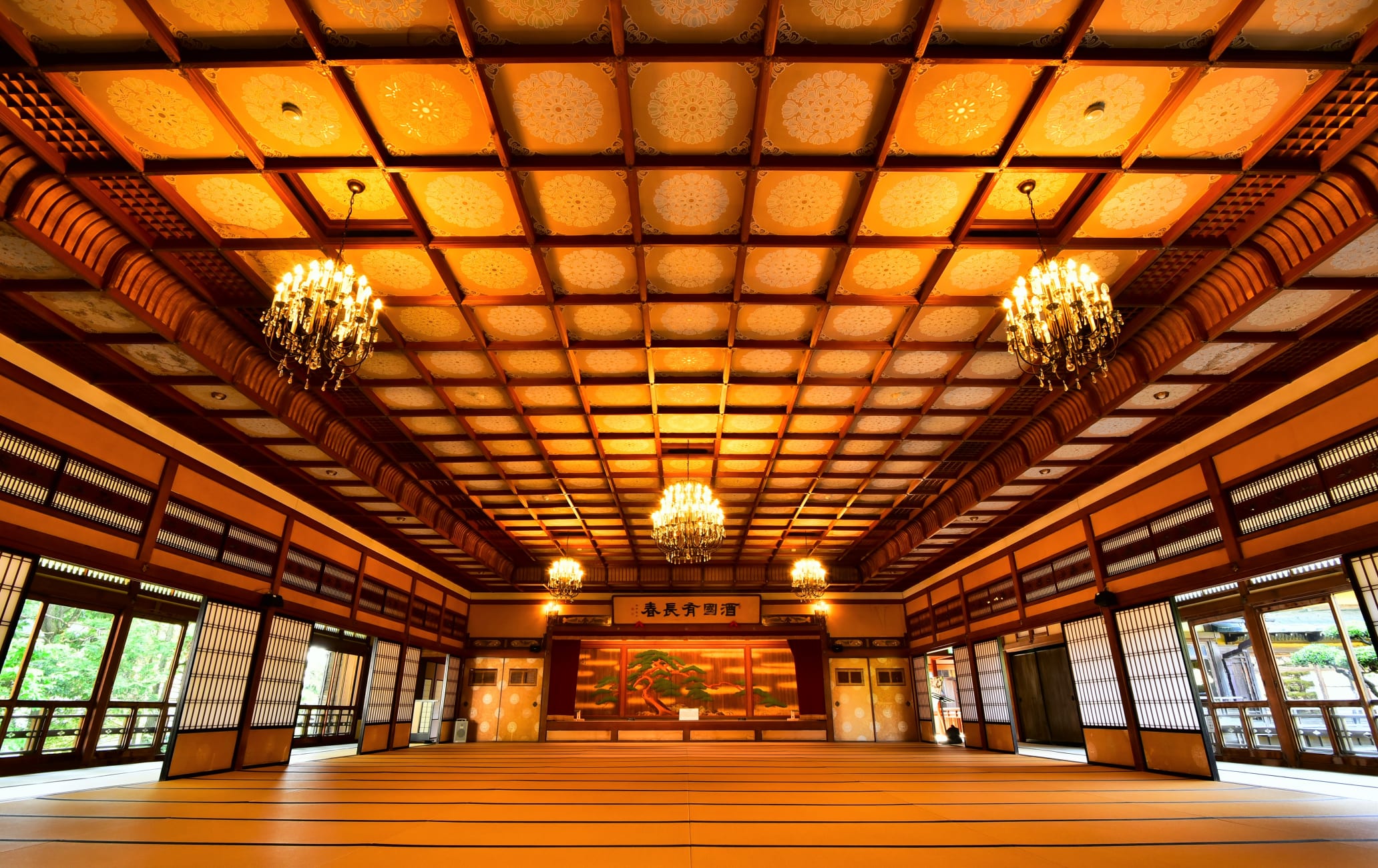A gorgeous, glamorous royal resort, now open to the public
Located near Ise-jingu Shrine and the famous Meoto Iwa , or “Wedded Rocks,” Hinjitsukan is a beautifully preserved inn that once served as a summer retreat for the imperial family.
Don't Miss
- The magnificently preserved rooms and covered walkways
- Meticulously landscaped gardens that look similar to how they did over 100 years ago
- Insights into how Western influence shaped culture and design as Japan modernized
Quick Facts
The building was completed in 1887
The Grand Hall is an excellent example of Shoin architecture, popular during the Momoyama period (1573-1603)
How to Get There
Hinjitsukan is accessible by train from Ise.
The JR Sangu Line takes you from Iseshi Station to Futaminoura Station in just over five minutes, and from there it is a scenic, one-kilometer walk that takes about 15 minutes.
You can reach Iseshi Station by Kintetsu Railway in around 90 minutes from Nagoya Station, two hours from Osaka-Namba Station in Osaka, and two and a half hours from Kyoto Station.


Exclusive accommodations
The Hinjitsukan was once an elite inn reserved for imperial family members and the rich when they visited the area to pay their respects at Ise-jingu Shrine or enjoy some leisure time.

In the late 19th century, after the fall of the Tokugawa shogunate, the mostly wooden building was exquisitely constructed using the finest materials available, yet it only took three months to complete, excluding later additions.

Today, sightseers come to appreciate the well-preserved architecture and landscaping. The Japanese gardens have been kept in especially fine condition.
A museum to modernization
The two-story guesthouse has been converted into a museum dedicated to architecture and interior design from the late 19th century, combining the finest Japanese craftsmanship and luxurious imports.


Among the traditional Japanese decorations, like painted screens and tatami mats, you will spot hints of Western influence in the furnishings. They are a visible reminder of Japan's eagerness to adopt and adapt to European ideas during the Meiji era.

























































